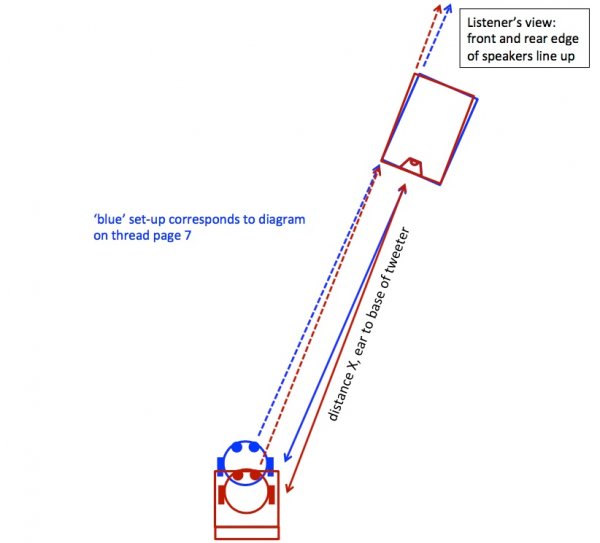Spoke to Tash today and now I just may have to come to Boston.
Cool! I'll send you a PM.
Spoke to Tash today and now I just may have to come to Boston.
Nice write up, Al. I look forward to hearing the changes. I gather the new 8' X 10' carpet does not have a pad underneath. This may account for the less absorption. Also, have you considered removing the carpet under the system in the front of the room? There has been some discussion about where the lively end of the room should be, if at all. A concert hall setting may not be analogous to our listening rooms, but the orchestra or quartet is usually at the live end while the audience is at the absorptive end.
There is a new concert hall in Rockport, MA which has a large glass wall behind the stage to capture the view of the ocean and sunset as backdrop for the audience. Some musicians request that the curtain be drawn for the performance. The sound changes considerably. At this point, it looks as if you have a near wall-to-wall carpet scenario. You may want to experiment with the existing wooden floor and an area rug between the speakers and listener to see how that changes the sound. I can imagine the hassle of removing that front rug, so you may not want to try it.
Al, have your various pairs of speakers always been so far out from the front wall? I had assumed this was for some sense of depth, image layering and 3-D holography. I did not know it created an overly recessed listening perspective to have them closer to the front wall. Being so far away from the front wall should mean that they have less boundary reinforcement for the mid/low frequencies and more direct sound from the drivers.


Well folks, I took Al M.'s advice and found a pair of reflectors for a demo. Brought along my own music and had at least a two hour session. I was most impressed by these big monitors. Coming from Magico S-5 MK 1s I was wondering what I might be giving up. I listen to Jazz from the likes of Houston Person, John Coltrane, David Fathead Newman and Gene Ammons and Chet Baker among others. Female vocals from Jacintha, Krall, Eva Cassidy etc and Chamber music from the likes of the Scottish Chamber Orchestra-Sir Charles Mackaras. Violin from Rachel Podger (Vivaldi) Ana Sofie Muter and others. I also do not listen very loud. And no big orchestral presentations.
Anyway, the Reflectors have a BE tweeter sort of like the Magicos although set in a wave guide (I think that's what you call it). The highs are as open and airy and perhaps a bit more polite than the Magicos. The kids are to die for. I have never heard better sax anywhere and in a session yesterday with a friend the spit on the reed was as real as ever. The piano notes do not have a particular annoying ring that they had with the S-5s. And the bass is strong enough in my room to round out the SQ. They are positioned about 15 inches from the front wall as I needed some bass support from the rear port. I have double bi wired them as I had 4 four foot lengths of speaker wire, with the Reflectors having Hi and Low speaker posts and my amps (Oasis S-200 monos-200 W class A) have two sets of active speaker posts per amp.
These speakers need no where near this kind of power, and I was ready to explore a tube amp such as Octave or PrimaLuna with EL34s, but no need right now.
C
Interesting that you would mention saxophone. Just last week a friend commented when listening to a track featuring saxophones (baritone, tenor) that this was some of the best sax sound he had ever heard from a system.
Al, I guess I must have commented on the great sound of the other instruments as portrayed by your system.
| Steve Williams Site Founder | Site Owner | Administrator | Ron Resnick Site Co-Owner | Administrator | Julian (The Fixer) Website Build | Marketing Managersing |

